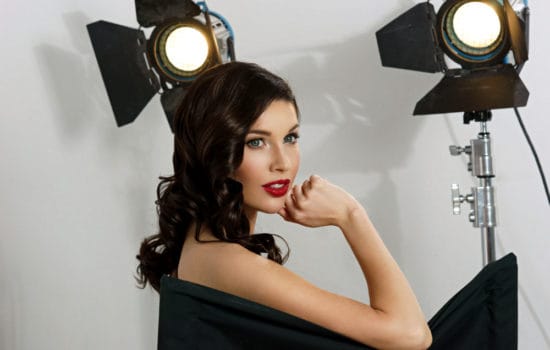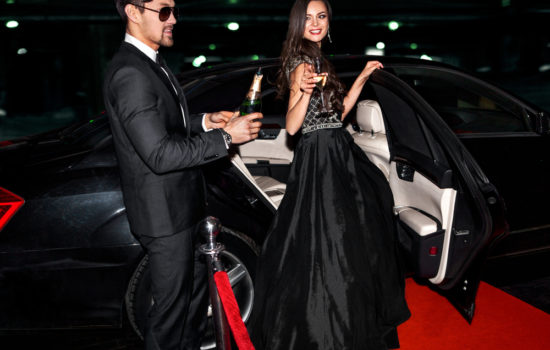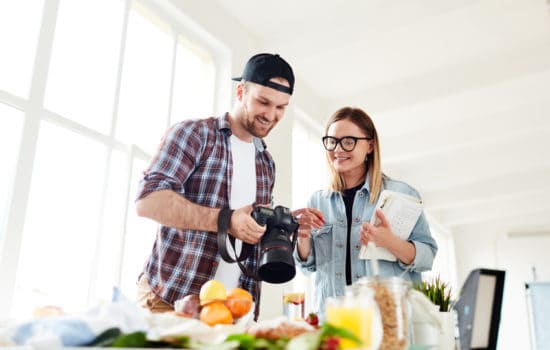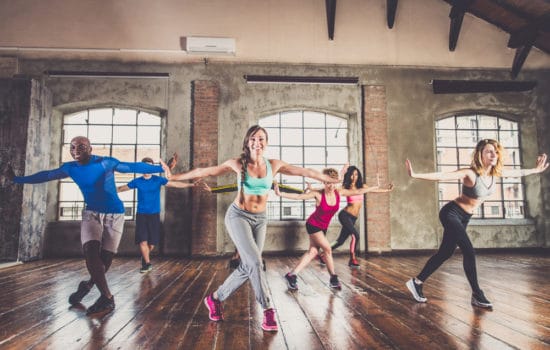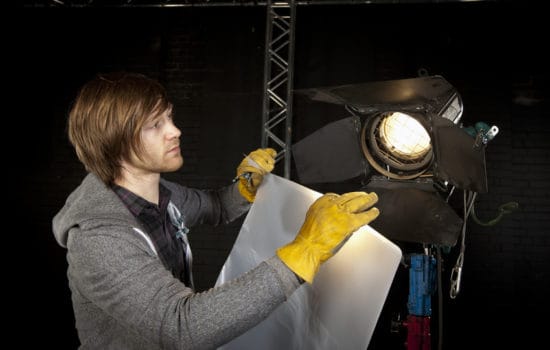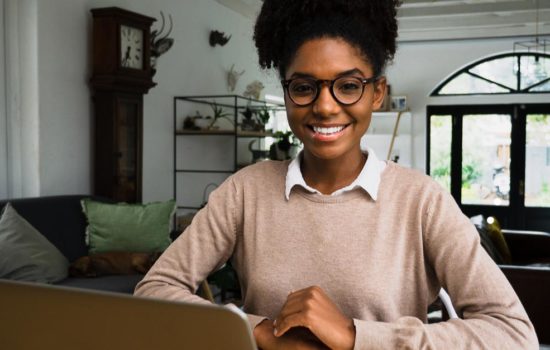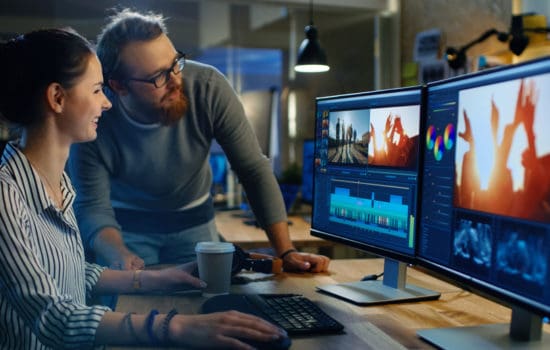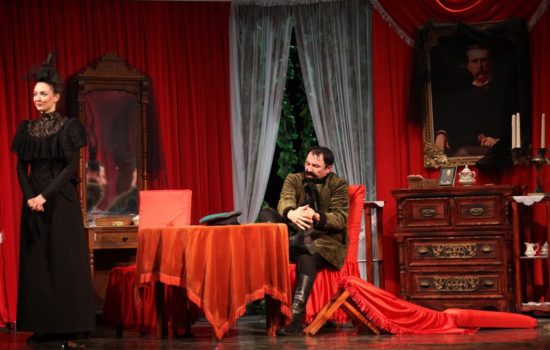In a nutshell, a storyboard is a shot-by-shot portrayal of how a film (or sequence within a film) will play out. Like a comic panel, events in storyboards are sequenced using squares containing visual representations of each shot. Typically, each square is accompanied by descriptive lines, clarifying dialogue or the essence of the image.
How to Storyboard: The Basics for New Filmmakers
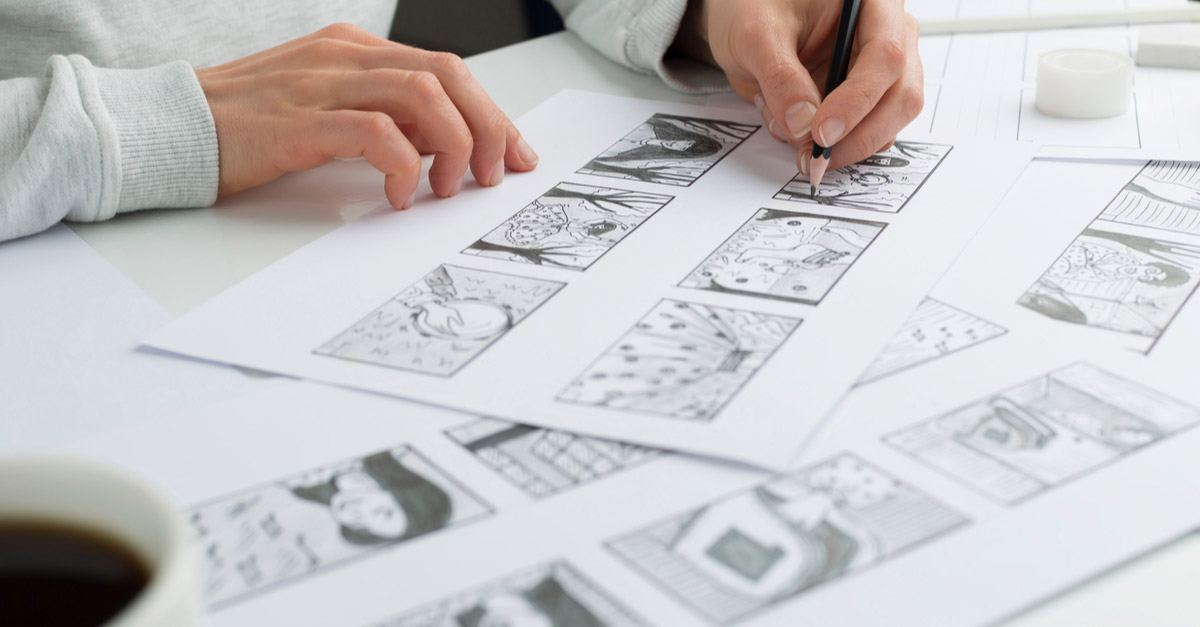
People also ask
Storyboards come in many forms, from thumbnail to highly-polished, but their intent is always the same: to provide a clear and concise visual representation of a series of shots.
In this piece, you’ll hear from Storyboard Artists:
- Shane Carrington (Men in Black: International, Sweetheart, Brigsby Bear)
- Robert Castillo (WandaVision, Precious, Captain Marvel)
- Jeff Errico (Birds of Prey, The Fate of the Furious, Straight Outta Compton)
- William David Hogan (Ms. Marvel, Watchmen, True Detective)
What Is a Storyboard?
What is the Main Purpose of a Storyboard?
A storyboard’s main purpose is to act as a pre-visualization tool for creators to plan the movement, camera angles, composition and even pacing for a scene. Essentially, storyboards act as visual roadmaps, giving production departments a clear sense as to how sequences are to be played out. Having been sketched out before actual filming begins answers questions and saves time during physical production.
Hey, what do you think about trying our new Film Career HelperFilm Career Helper really quick? It’s totally free and could help get your career moving fast! Give it a try. It’s totally free and you have nothing to lose.
Where It All Began
Storyboarding traces its roots back to the early 20th century when the Walt Disney Studios pioneered the concept of creating a visual representation of a story prior to any actual filming. The term “storyboard” emerged from the process of arranging illustrations on a piece of paper or board to express the flow of a narrative. Initially used in animation, storyboarding eventually expanded its reach into the live-action world.
Let’s break down the “why” of storyboarding even further…
Efficient Vision Communication
Storyboards are the fastest, most effective way of conveying an artistic vision to a crew. By relying more on images than words, storyboards speak a universal language that tell stories visually, cutting right to the core of the idea a director is trying to express.
Time Saver
While crafting and building storyboards themselves can sometimes be time consuming, ultimately they’ll save time by eliminating the need to explain (and re-explain) a creative intent. It’s also far faster to revise a storyboard than a staged shot or completed sequence.
Simplifies Production
Having all of the visual elements clearly displayed and in sequence creates a lucid scenario that leaves little room for questions. A good, clear storyboard provides the crew with a vivid visual scenario of how scene mechanics are meant to play out. Ensuring all the scenes are present and set in sequence also avoids the possibility of accidentally leaving out any shots.
What is the purpose of storyboarding?
The purpose of storyboarding is basically to draw and put the vision of the Director on paper. You’re jotting down camera moves, maybe some acting, some story elements, so that everyone can follow. You want everybody to be on the same page. It’s a very powerful communication tool.
It goes back to the 1930s and Walt Disney. You had some studios in New York that were doing animation, like the Fleischer brothers, but Walt Disney is credited with doing storyboards for his animated cartoons in black and white in the 1930s. A lot of Animators came out of New York. New York was the hub of animation in the 1920s and ‘30s, and what happened was Disney paid a lot better, so a lot of people went out to California (and the weather was nicer).
In that time period, Walt Disney did some shorts for movie theaters like Silly Symphony and Plane Crazy with Mickey Mouse, and some of the artists there developed a way to kind of see the movie before the movie was made so that they could save money. Because you don’t want to make a movie and it doesn’t work.
A good way was to get it drawn and then put it into panels, look at the panels, and maybe have sound to it and voices, and kind of see what people were going to watch.
From there, it made its way into big films. Citizen Kane, Gone with the Wind; they utilized storyboards. (Unfortunately, a lot of people don’t know who the artists were on those movies.) Hitchcock was really into storyboards. In fact, he’s quoted as saying, “If it’s on paper, then the movie is done.” Like, he really loved boards.
I always try to tell the kids when I’m teaching that it’s good to know a little history of whatever you do. It’s so important.
Storyboards are a pre-visualization tool used to plan film shoots. In other words, I draw what they’re going film.
The reason we do so is so that everyone involved in the production is on the same page creatively. If you’re directing a scene with a lot of VFX or a lot of stunts, several departments are involved. To make sure everyone has the same idea of what the car chase looks like or what creature the Mandalorian is battling, we draw out the shots so it’s crystal clear to all involved.
Storyboards can be used for other purposes as well. They’re used extensively in advertising to present clients with how their ad campaigns might look. They’re used in animation extensively, where a new frame is drawn every time a character changes expression or a pose. And sometimes, especially among newer Directors, they’re used to make sure you’re clear on what’s to be filmed so time on set isn’t wasted.
Storyboards is an umbrella term but you’ll hear “advertising boards” or “shooting boards” once in a while. Advertising Boards are usually in color. Shooting Boards usually means rough, rough storyboards. They need them just for the actual shoot (meaning studio execs, who might misinterpret what they’re looking at, won’t see them).
There are two types of storyboarding. There’s live-action film and commercials, and there’s a type for animation.
For film, it’s an expensive and invaluable pre-production tool. You’re pre-visualizing shots with the budget in mind and with the day in mind, thinking about timing and how much it takes to shoot and set up.
For animation, you have to get everything exactly the way you’re going to have it in the end. Someone else is usually going to do the animation, so it’s got to be precise. No fluff. There’s no, “Let’s try this on the day.” It’s got to be: “This is what it’s going to look like.”
It’s a great pre-production tool to save time and money because everyone’s on the same page. The Director and the Production Designer can say, “Okay, this is the shot, so we don’t need to see that part of the set.” All kinds of things like that.
The first function of it is to budget the film. They can say: “Let’s storyboard this zombie attack scene.” It’s cheaper to have a guy draw that on paper than it is to shoot it. They’ll do it for budgeting purposes, so they know they can scale it down to 10 zombies instead of 100, and one tank and one helicopter instead of a fleet. They can go, “How are we going to shoot the guy climbing over the bridge?” That’s going to have to be a CG wall because then they might do more special effects.
There’s a guy on a train fighting a vampire. Okay, the train is a real train on a soundstage. This shot is the Stuntman. This shot is the Actor. This shot is a CG creature. This shot is of an Actor in creature makeup with sand in the background. This shot is the first unit, this shot is the second unit. So they also use it for scheduling. Because most of the time, a lot of these films get broken down into first unit and second unit.
They’ll also storyboard for action sequences. The actual Director is shooting the principals; the main Actors. Second unit is shooting the actual stunt sequences. Brad Pitt is too busy shooting his close-up, he’s not going to be running towards the helicopter—that’s going to be the Stunt Double. They have to figure out the best use of their time.
There’s also something called pitch boards. They might have someone do key frames which help sell the idea to investors. Storyboards break down into shooting boards, key frames, and thumbnails.
Key frames would be the last idea, like, “Let’s do a real cool piece of concept art that shows the monsters attacking the city to sell the wow factor.” Hit the big shapes of the film to show to investors and try to get funding.
That’s where I’ve seen the purpose of storyboarding: stunt sequences, action sequences, scheduling, budgeting, and figuring out what unit is shooting what. The stunt unit will be shooting any crazy explosions and that stuff–second unit and Assistant Director. The actual Director is shooting the principal Actors doing their acting.
Types of Storyboards
There are two types of storyboards: thumbnail and traditional.
A thumbnail storyboard is a fast, rough sketch to provide a sense of how shots will work together. There’s less detail involved in these types of sketches as they’re more involved in the sense and feel of a sequence. Once an approved look at rhythm is established as this stage, storyboards can progress.
A traditional storyboard is a more fleshed-out version of the visual sequence. Elements are specifically drawn and images are presented with greater depth than in a thumbnail. This is typically the version that gets presented to a larger group, as detailed images can create a more vivid example of the way a narrative should play out.
Parts of a Storyboard
What are the 5 parts of a storyboard?
A storyboard consists of:
- Subject
- Background
- Camera angle
- Camera movement
- Captions
Let’s zoom in on these elements…
Let’s zoom in on these elements…
Subject
This should be fairly obvious. The subject is the main focus of the storyboard sequence. It’s the “star” of the shot, whether it be a single character, multiple characters, or even an object of high interest.
Background
Background establishes the setting where the image is taking place. Less often found in thumbnails, backgrounds help provide a true sense to the location of the sequence as well as important context.
Camera Angle
The camera angle encompasses everything the viewer (and eventually, audience) can see in the panel. Audiences are affected by what they can (and can’t) see, so camera angles are vital in terms of conveying emotion and narrative.
Camera Movement
Typically signified through the use of arrows, camera movement is also an essential component of narrative execution. Designating shots as wide shots, close-ups or dolly helps all departments clearly understand a filmmaker’s intent.
Captions
To provide further context, panels are often accompanied by captions, which textually explain what’s happening in the panel. Often, captions are used to provide elements the visuals alone can’t (like dialogue or character gestures).
What do Storyboard Artists use in their work?
Nowadays it’s almost exclusively digital capture. The two main camps are Wacom Cintiq tablets and iPad Pro with Apple Pencil (what I use).
When I began, you had to draw storyboards in a way that they could be FAXed without losing quality. To this day, black and white drawings with just a splash of grayscale are still the preferred look. For someone starting out, I would develop a good B&W style first, before resorting to tricks you can do in Photoshop. Every once in a while, I still have to draw on paper on a set.
I use an 11″ iPad Pro with Apple Pencil (2nd gen). I draw the boards using Procreate on the iPad then finish the boards (doing layout, adding text, effects) on my laptop in Photoshop.
The most common software is something called Storyboard Pro. It’s a very fancy program which I do have. I’ve used it a little bit, but it’s kind of like the equivalent of Photoshop. They use it predominantly in animation because you can literally do your own animation in film on it. You can do audio. You can do music.
But it’s very overwhelming when you first look at it. You might take a few classes to get your bearings. There’s a bit of a learning curve. It’s a little on the pricey side. That seems to be one of the most common pieces of software out there and it’s good.
I actually use these other programs more regularly: Storyboarder and Photoshop. I’d say almost every Storyboard Artist uses Photoshop in some way, shape, or form. There are other ones out there, but Storyboarder and Photoshop are really the two.
Storyboarder is a scaled-down version of Storyboard Pro. It’s more simplified. It depends on what kind of storyboarding you’re doing. Some guys are doing animatics. Some guys are doing visuals, and some guys maybe not.
Maybe you don’t need all those bells and whistles on the Heinz Ketchup commercial or movie that you’re working on. The guys doing all these Marvel movies have to animate all this crazy stuff. Like if you have to animate the movie before they shoot it, you have to work out the timing and the editing. That’s a lot of stuff going on, so you want software that gives you those options.
But if you’re working on something that’s a little more straightforward, you might not need to use all those bells and whistles. People move around and use what works best for them. If you’re a Painter, you’d be like, “These are my favorite brushes, but I have all of these brushes so I can pick and choose what I need based on the job.”
I use everything. One day I’m drawing animals for a commercial, the next day it’s cars for a film and buildings are exploding and there are tons of people. So you have to be able to draw everything. References help, from Pinterest or a Google Image search. I have books. Looking at other films, too. I use everything I can. I have such a big library in my head from doing it for so long—a lot of references.
You need to be able to draw something from your head that maybe isn’t perfect and absolutely correct, but provides a quick reference of an image or whatever you’re drawing or whatever’s in the shot. I’m all digital, so I use Photoshop and I have a digital Cintiq which I draw directly onto.
You need to be able to tell the Director, “I see this in a 25mm lens,” or, “I see this in a 70mm lens that compresses the space so everyone looks stacked while we shoot down the street, and that creates the emotion of claustrophobia.” It’s a Director’s job to dictate tone, whether it’s in a scene or first act or the whole film. Working with Actors and setting up shots and all that adds up to tone.
You should have an understanding of the way things move. People, animals. You have a lot of acting to draw. If there’s a scene with a lot of dialogue, you can’t just draw one shot. The character moves from one side to the other and they’re talking, so you need to be able to draw that. Live-action is very different from animation.
Storyboard Artists use many things like perspective, composition, camera movements, and arrows. There are so many things that go into it. Me personally, what I put into storyboards is a sense of acting from the characters. I like to read the script and find out what’s going on.
For example, let’s say two people are sitting at a table, and it’s a commercial. Maybe one of the characters is grumpy. The other one is more energetic. What I’ll do is I’ll put that into the drawing of the gestures and the body language. That’s something I do that a lot of clients like.
I have an illustration background, so sometimes I add details or shadows and make it really vivid. You don’t have to be able to do that, but it really helps everybody and you can bring a lot to the storyboards. So, that’s a good question; it depends on what that person can bring to it.
But some of the basic things that you need to bring are space and perspective, and also camera moves with the arrows. What’s happening in the frame? Is the camera pushing in? Is it pulling out? Are we panning from left to right?
To be a good Storyboard Artist, you’ve gotta have that cinema language. You’ve gotta understand movies. It really helps a lot. It gives you an edge. I always encourage my students to take other classes. Take a class on film, and look at Kurosawa.
Akira Kurosawa is a Director I always bring up because he was a Painter first, and he was an artist, so he has an eye for composition. He’s regarded as one of the greatest filmmakers and a lot of movies and animations today are influenced by him because his shots are so beautiful. They’re composed in a great way. So I always tell my students, “Take a painting class. Take a film class, a video class. The more you can bring to it, the better and clearer the boards will be.”
How to Build a Storyboard
Analyze the Script
Before a single line is drawn, there needs to be a clear idea of the story that’s being told. Analyzing the script, and understanding the story, themes, setting, time, characters and their motivations is crucial in depicting key elements of the story visually.
Identify Key Scenes
It’s not usually necessary to storyboard every single shot of a movie (although this has been done, see this impressive combination of MAD MAX FURY ROAD’s script/storyboard combination here. What’s more essential is showcasing the big set pieces, heavy plot developments, and key turning points.
Choose Your Level of Detail
Sometimes this comes down to how much time (and money) you have, but the more detailed a storyboard is, the more time and energy it can save you when it comes to actual production. If your allotted budget and money only allow for thumbnails, make the most out of what you can. A rough storyboard is better than none at all.
Describe What Each Panel Will Depict
This is different from the caption, which serves to enhance the finished sketch. The description we’re referring to here is for you (or whoever is actually drawing the storyboards) to provide a clear understanding of each panel’s intent. Make sure to include everything you want your viewer to see when they’re looking at the panel in these descriptions.
What makes a good Storyboard Artist?
You don’t have to be the best artist. I’ve seen guys that work on massive films who aren’t the greatest artists in terms of technical ability per se, but they can tell a story. The test of a good Storyboard Artist is, can they tell a story through images? Can they convey what’s happening in a scene? That’s the number one thing.
You have to be a good storyteller and a bit of a Director. Especially in animation. They’re giving you scenes and you’re adding what you think will work. You’ve gotta be a Director and tell a story through images.
And be quick. You aren’t going to get a job where they’re like, “Take a month!” Time is money in film.
You only get better as you do it, as with anything.
First and foremost, you’ve got to be a good listener—because when I meet a Director, I want to know what their vision is. I research them. I see their work out of respect. You don’t want to meet someone and say, “Oh, I haven’t seen that.” You want to be well prepared for that.
So you want to be a good listener, and you also want to be a good storyteller. You can use some of your personal things. Try to connect with the story.
With me, I do my homework. Do your homework, okay? Say I’m working on a scene for a movie. It’s a dinosaur movie, and I have to do a scene where a tyrannosaurus rex is chasing two people. What I would do is I’d make a folder and go look at a tyrannosaurus rex. I would reference back to Jurassic Park because there are some amazing shots in there. I’d compile a folder of all these things that would inspire me for that job. I gather information that’s going to help me achieve a shot. You’re able to translate the word into visuals that way.
Sometimes I tell my students if you can’t find the reference, make it. Create it. You have a powerful thing in your pocket; it’s called a cell phone. Everybody has a camera, so if I’m drawing a storyboard and I can’t get an angle of a certain shot, I’ll take my phone, grab a friend, and I’ll set them up in the way that the shot needs to be set up. And now you have information. You have to be smart in gathering what you need to execute that shot.
You have to be someone that can visualize things and jot down ideas very quickly. It’s a fast world with storyboards. On most of my jobs, they’re needed yesterday. They’re like, “Hey, this is due. We need it in a day or two.” You have to be very fast in this industry.
There’s a big need for Storyboard Artists. I’m always pushing students to look into it because entertainment is billions of dollars. We have streaming services, we have games coming out almost every week, and there’s a really big need for pre-production and Storyboard Artists out there.
Understanding film and being fast is better than being good. A Director who hired me constantly when I was starting out told me once I didn’t draw very good, haha, but loved that “I knew film.”
What he meant is that when two people are talking in a scene, I didn’t cross the 180. When he’d say “go from a 200mm lens to an extreme close-up on an 18mm lens,” I knew how to draw that. I’m just giving script pages often and you have to know what must be filmed to make the scene work.
Drawing your wide shots, coverage, close ups, reverses, and inserts all factor in to making a scene work. But understanding filmmaking is critical. Most scenes revolve around one character so you have to know who the scene follows and what’s the purpose of the scene. This will dictate what you include (and leave out).
Having solutions, having ideas. There’s a big misconception that Directors have all the answers. They’re often sitting with you to discover the bones of a scene, mining for ways to approach it visually. The more imaginative and creative you are, the better you’ll do.
Finally, being fast. Delivering work is better than perfect work. As much as everyone loves pretty boards, they’re a tool that production uses so whatever style you develop, you must be able to churn out clear, easy-to-understand frames daily.
I recently storyboarded HBO’s Watchmen and the Director wanted the boards really rough so she could draw more scenes. I told her after working on such an incredible series–I have nothing that I can put in a portfolio, haha. It all looked like chicken scratch! However, I work for Director Rawson Marshall Thurber (Dodgeball, Central Intelligence) and just did a Marvel series (Ms. Marvel) and they really want pretty boards, which is great, too.
It’s more about what makes a good storyboard. Is there a strong understanding of anatomy, depth, composition? Is the frame readable? If all of those things are working on the board, then the Storyboard Artist is a good Storyboard Artist. There are also the basic tasks of meeting the deadline, showing up on time, not dragging your feet—those life tasks are good food for thought.
The one thing that most Storyboard Artists don’t talk about much is having a strong understanding of perspective. There’s a lot of software out there. You can use the software as shortcuts, but at the end of the day, all these DPs [Directors of Photography] are looking at the boards and saying, “Where does the camera start and where does the camera go?” That needs to be communicated through perspective.
A good storyboard has a strong understanding of perspective and anatomy, gestures, shades forms, top plane, under plane. We’re looking at this person from a profile and now we’re booming out to the round three-quarter, and we’re communicating that in the scenes. Now we’re moving up to see this side of this Actor’s face, and now we’re seeing the front plane … those are things that are really important.
It has to be readable for people that don’t read scribbles in like three seconds. They’re looking at these things to know what side of the shoulder we’re on, where their eye line is. They don’t care how detailed your drawing is. They have Brad Pitt or whoever on screen. They’re going to beautify them. It’s understanding those little nuances. They need a maker who can kind of draw.
Understanding the 180 rule, consistency of right to left, left to right: those are the things that people care about. Those are the things that are going to make you a good Storyboard Artist because on the day they matter. At least that’s what I’ve noticed. Everybody likes a pretty frame—if there’s time to beautify them, that’s always a plus. But it may not always be necessary. Sometimes simpler is better.
Some of the most renown sequences in film have used storyboarding to great effect. Click this link to see a list of familiar favorites. And if you want to watch an expertly crafted storyboard-to-film comparison, check out this iconic sequence from JURASSIC PARK. Note the confluence of emotion and narrative build within the sequence. It doesn’t get better than this.
A Few Things to Avoid When Storyboarding
Careless Composition
Ideally you want your storyboards to be emblematic of the finished product. So to that point, you want your panels to be as cinematic as possible. Study great art for inspiration. For some astounding film references, take a look at these.
Jarring Scene Transitions
Always ensure there’s a flow and rhythm to the panels. That’s not just between the panels themselves, but also between the sequences and scenes you’re depicting. Everything should feel as though it fits together and belongs to a singular, larger piece.
Lavish Camera Angles
We’ll start by saying that sometimes these actually do work well, but when they don’t (which unfortunately tends to be more often than not), they can stop a film (or storyboard sequence) dead in its tracks and jar a viewer right out of your narrative. There’s a difference between being cinematic and being overly stylish, so be mindful of anything that may stand out a bit more than it should.
Summary
Storyboarding is a vital tool when it comes to filmmaking. By creating a visual blueprint for creatives to follow, it expresses the story visually and plainly, allowing all departments – from camera to talent to post-production – to unify in pursuit of the project’s larger creative vision.
FAQ
What are the 7 steps in storyboarding?
Storyboarding is the process by which a film’s key sequences are drawn during the pre-production process so that all key cast and crew understand visually how the movie will be shot. While the steps of storyboarding can be different from one Filmmaker to the next, they generally include these elements:
- Defining what you want your storyboards to accomplish
- Sourcing storyboarding references
- Determining the storyboarding timeline
- Deciding the critical storytelling sequences that require storyboarding
- Choosing a level of detail for the storyboarding process
- Drawing the storyboards
- Making any edits to the storyboards where and when necessary
How do you start storyboarding?
Storyboarding is an option available to any Filmmaker regardless of their drawing proficiency. But before you begin, you must decide to what degree you want to storyboard your film and whether you will be the person doing it. Not every scene must be storyboarded for a film, but if there is any confusion or complexity regarding a shot or scene, a storyboard can help to ensure that everyone involved in the shooting of that shot or scene understands how it should go. That aside, it’s simply a matter of putting pencil to paper or fingertips to a keyboard to begin the storyboarding process.
What is the basic rule in storyboarding?
The basic rule in storyboarding is not to ignore the 180-degree rule. That is to say, as the prospective viewer of a film, you are watching it from a specific vantage point. That vantage point must be honored in terms of not crossing over the imaginary 180-degree line created by the camera that mirrors the viewer who will later be watching the film from the same angle.
Sources
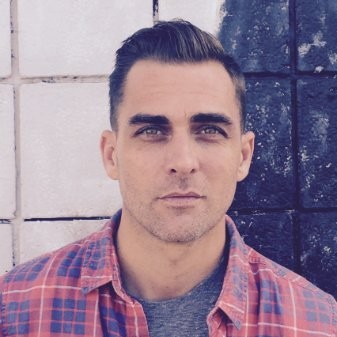
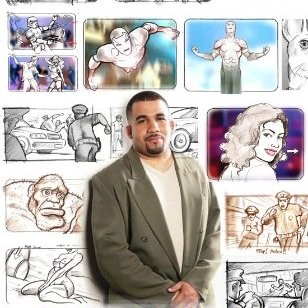
Robert Castillo
As a Storyboard Artist, Robert has created Storyboards for films including the Oscar-nominated film Precious, Storyboards for Marvel’s Ant-Man, and the award-winning cable television program The Sopranos. Recently he has done Storyboards for the Marvel Film Captain Marvel. He has also done music videos for Jay Z, Alicia Keys, Kid Rock, and Lauren Hill, commercials for Mcdonald’s, Bud Light, Nissan, and Coca-Cola, as well as promo work and music videos for MTV, VH1, and ESPN. Robert has done Concept Boards for shows like Black Lightning, All American, and Living With Yourself for Netflix. He has done Storyboards for Wandavision and Hawkeye on Disney+.
Robert’s talent has been recognized with various awards, and honors including The Student Academy Awards in 2004 for his short film S.P.I.C. The Storyboard of My Life, which has screened in 16 festivals including Cannes and The Museum of Modern Art. In 2005 S.P.I.C. had a special screening at TIME Magazine in NY and at Walt Disney Studios.
Robert has lectured on The Art of Storyboards at NYU Tisch and The School of Visual Arts. Robert has given back by auctioning his artwork for The John Starks Foundation as well as Project Sunshine. He also volunteers his time with Ghetto Film School in the Bronx, NY, Mount Sinai Hospital, and The Automotive High School of Brooklyn, NY. Robert is currently a Professor of Sequential Arts at Savannah College of Art and Design in Georgia.

Jeff Errico
I’m a freelance Storyboard Artist here in Los Angeles. I have been storyboarding for almost ten years. I have worked on such projects as FAST 8, NWA Straight OUTTA COMPTON, THE HOUSE, MIKE & DAVE NEED WEDDING DATES, TERMINATOR: GENISYS, 22 JUMP STREET, and numerous others. I have worked for high-profile Directors such as Phil Lord & Chris Miller, Seth Rogen, McG, F Gary Gray, Rupert Sanders, Alan Taylor, Francis Lawrence, Tarsem, along with numerous others. I was the Staff Storyboard Artist for Season 1 of LETHAL WEAPON and worked closely with the Stunt Coordinator, DP, and camera men to design shots and action sequences.
I have a strong understanding of storyboarding & designing the shot, along with a strong understanding of the logic & equipment used to “get that shot” for action sequences under 2nd unit direction. I also have on set experience as well and can create your boards on the fly on set if needed. I take pride in my work and love what I do. I do the best I can to design your shot.
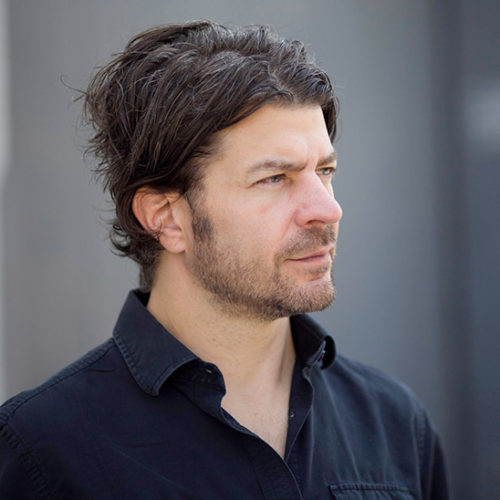
William David Hogan
Director W. D. Hogan and IMAX worked with NASA, JPL, and an international team of scientists to showcase planetary defense in Asteroid Hunters (Summer 2021). Narrated by Star Wars: The Rise of Skywalker Actress Daisy Ridley, the filmmakers utilize the full extent of IMAX technology to give audiences a deeply immersive experience.
Captured in large format, native 3D, and nominated for Outstanding VFX, the film explores the birth of our Solar System, threats asteroids pose, and the innovative mitigation techniques developed by scientists around the world—and features the largest rocket ever captured on IMAX film, the Delta IV Heavy.
For over twenty years, W. D. Hogan collaborated with legendary filmmakers in the art and design of storytelling. Beginning in music videos with director Chris Robinson’s Robot Films, he worked in independent features and television before joining forces with IMAX Studios.
Crafting dynamic scenes as a Storyboard Artist heavily influenced Hogan’s cinematic approach to both story design and performance. This ability to visualize complex sequences helped Marvel Studios & Disney+ bring Ms. Marvel to life, The Wachowskis construct The Matrix: Path of Neo, Rawson Marshall Thurber envision Red Notice, Nic Pizzolatto explore True Detective and assisted Nicole Kassell and Damon Lindeloff in designing HBO’s groundbreaking series The Watchmen.
W. D. Hogan is a member of the DGA and repped by WME.
